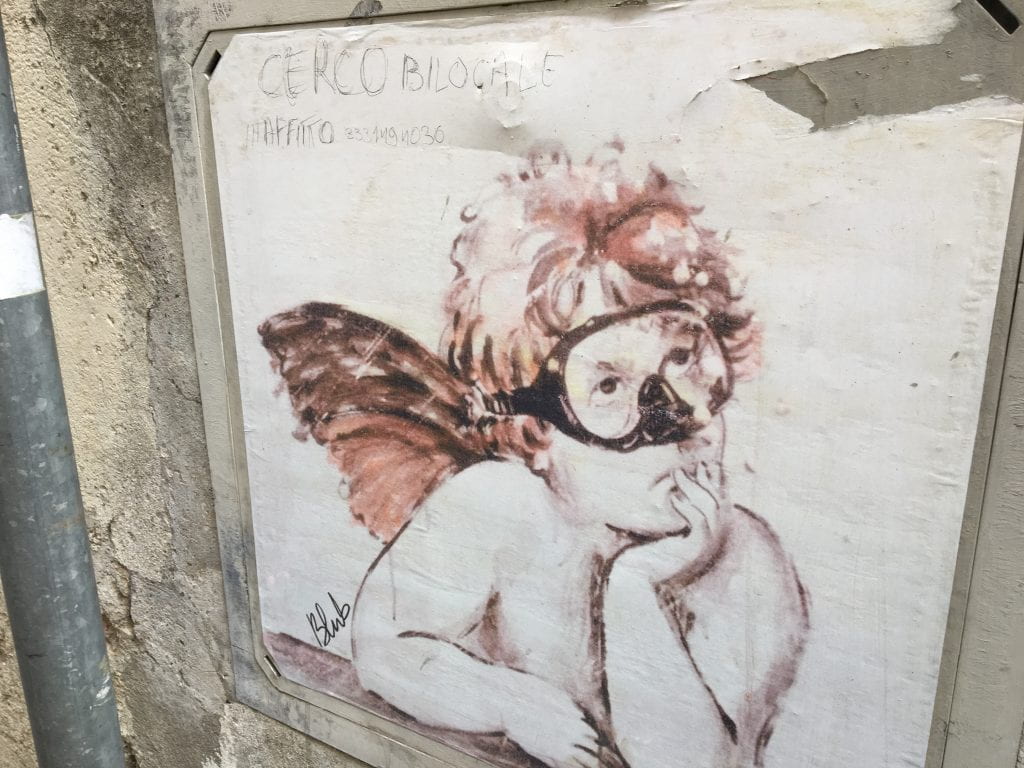I recently spent 12 days vacationing in Italy with my mother and two older sisters. While my body is still processing large quantities of delicious cheeses, pasta, and gelato, my mind is digesting the experience of touring a foreign country with different norms, cultural nuances, and of course — a different language (though the diversity of head scratching bathroom set-ups also bears mentioning). On this trip, translation was always on the brain: translating my thoughts to others and in turn trying to understand the information presented to me, whether on signs, at train platforms, or spoken by short-tempered wait staff. Because despite my half-hearted attempts at learning Italian with the DuoLingo language app, or my high school courses in the nearby romance language French, I was nearly useless in speaking or understanding Italian.
The Need for Translation
My week plus of translation needs in Italy got me thinking about the role of translation in biology and, in particular, in genetics. In both contexts, translation carries at least two main functions: (1) operationalizing and (2) meaning-making. Operationalizing means to make functional, or to make a thing do. Translation is a key term in the Central Dogma of Biology. DNA isn’t terribly useful just sitting all spaghetti’d up in our cells. Rather, DNA carries instructions on how to make proteins that build us and do most all the work in our body (this is DNA as the “instruction book” or “blueprint”). The Dogma states that DNA gets transcribed into RNA, a molecule very similar to DNA but more easily accessed by other cellular machinery. Then RNA gets translated into protein, going from a nucleotide code (the A’s, C’s, G’s, and T’s – actually U’s, for RNA) to a chain of amino acids that gets all folded up into a beautifully complex protein. Translation is the operationalizing of DNA, the process that makes it do.
The Central Dogma is great and all but it’s a process scientists have understood for about half a century now, so not exactly breaking news. The challenge currently facing genetic researchers is truly understanding what different variations in genetic sequences actually mean for people’s health and well-being — and perhaps their identity. Here the challenge is translating knowledge of DNA sequence into actual meaning. Perhaps into meaning for an individual patient and their health care provider making a treatment decision. Or perhaps meaning for a large group of people by better understanding how a disease or other biological process works. The questions are more than just what changes in DNA do to proteins, which could take us back to that literal translation step of the Central Dogma. The questions spiral out: only ~3% of our DNA codes for proteins, but all that non-protein coding DNA could affect other things like regulation or as yet undiscovered cellular processes. Also, our genetics interact with other things in our bodies and in our lives, further complicating the meaning-making part of the translation puzzle.
The Tools of Translation
My needs for translation in Italy were pretty much the same: to be able to do things and to make meaning. I am not an expert traveler nor linguist, but I did have some amateur tools at my disposal. First and foremost: on my smartphone, Google Translate (with Italian downloaded for offline use) and an Italian phrasebook app. Off the screen, my sisters and mother who had also done some DuoLingo lessons, and my occasionally useful knowledge of French. Google Translate, which I used quite frequently, would often give me incomplete information — sometimes a word wouldn’t translate, or it would give me something I had no idea how to pronounce (and the audio pronunciation isn’t available offline). I knew some of the rules, for example: “ch” is a hard C, as in chianti, while “ci” is the “chuh” sound, as in ciabatta bread. But usually I was moving through the world with partial information, still enjoying myself and interacting meaningfully with my surroundings.

I bring up the amateur aspect of my translation experiences in Italy because I see parallels with the phenomenon of consumer genetic testing. While scientists are still wrestling to make meaning of human genetic variation, consumer companies have gone ahead (some would say prematurely) to make interpretations of personal genetic data available directly to consumers. The majority of these consumer genomics customers are, like I was with Italian, not specially trained to interpret or filter genetic information. Yet if given some tools and some rules, they can probably navigate the unfamiliar territory with some degree of enjoyment and success. Sure they might make a wrong turn or get caught in a tourist trap pizzeria (darn you Piazza della Signore in Florence!). But should they be denied access for their lack of expertise, or for being only armed with some amateur and partial tools of comprehension?
Of course in my Italy metaphor the answer is “No!”, but I recognize that consumer genomics is more complex — and newer, which makes it harder to identify and weigh potential risks and benefits. Should access to personal genetic data be limited to specialists? Should specialists make better tools to enable amateurs to pursue their own translational and meaning-making activities? Tourists have been bumbling around foreign countries since there was bumbling to be had: that’s just part of the human experience. Is bumbling around our own genomes also going to become part of the human experience?
Very cool comparison between language/travel and genetics/biology! Ciao bella.